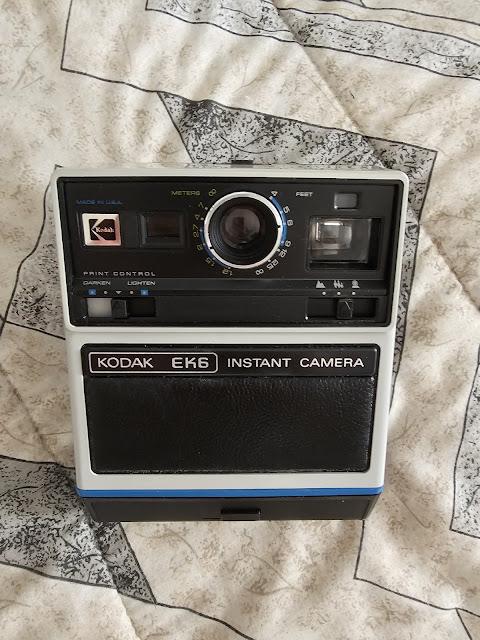Photography is Photo (light) + Graphy (writing) = Light writing or Writing with Light.
So for those new to this.... proper exposure requires knowing, film speed (ISO) & lens opening (aperture or f stop) & shutter time (seconds).
A light meter will let you know typically a missing variable such as what shutter speed or lens aperture.
All the instant cameras that I have has some sort of built in light meter. However light meters are not perfect in Instant Cameras. They don't have a sensor (unlike a digital camera) and thus metering happens with some sort of reflective meter attached somewhere on the exterior.
Learning this photography thing again reminded me that this is FILM and not DIGITAL and you expose for the shadows and not the highlights unlike digital (or slide film) where it's the opposite.
I went back to old school and the king of metering is still the spot meter (item on the right). It's cool because I had to use the old zone system of metering (for another day). Fun because I had to think about the results I got and apply it towards getting the exposure I wanted. IT WORKED!!!
However walking around with a spot meter sometimes will make you look like a director or pro photographer wanna be and I wanted something small.
The item on the left is a digital mini meter made by Keks. It's ok but because of it's design, it's easily fooled in terms of what to expose for. Bright day with a subject in the shadows - the shadow item will be too dark.
The old school meter by Sekonic has a bit of the same flaw as Keks. I stopped using it because it was metering about 2-3 stops TOO bright. Thanks to the power of YouTube, I found someone who had a home DIY calibration of this meter. Without a lot of detail here, it worked. Verified with 3 digital cameras (Leica, Fuji and Nikon), I took it out and it works well.
This journey is still full of fun and adventure once again. There is just more enjoyment and joy with analog.









